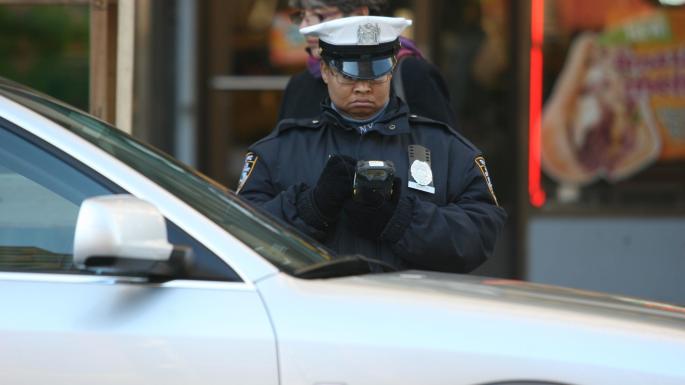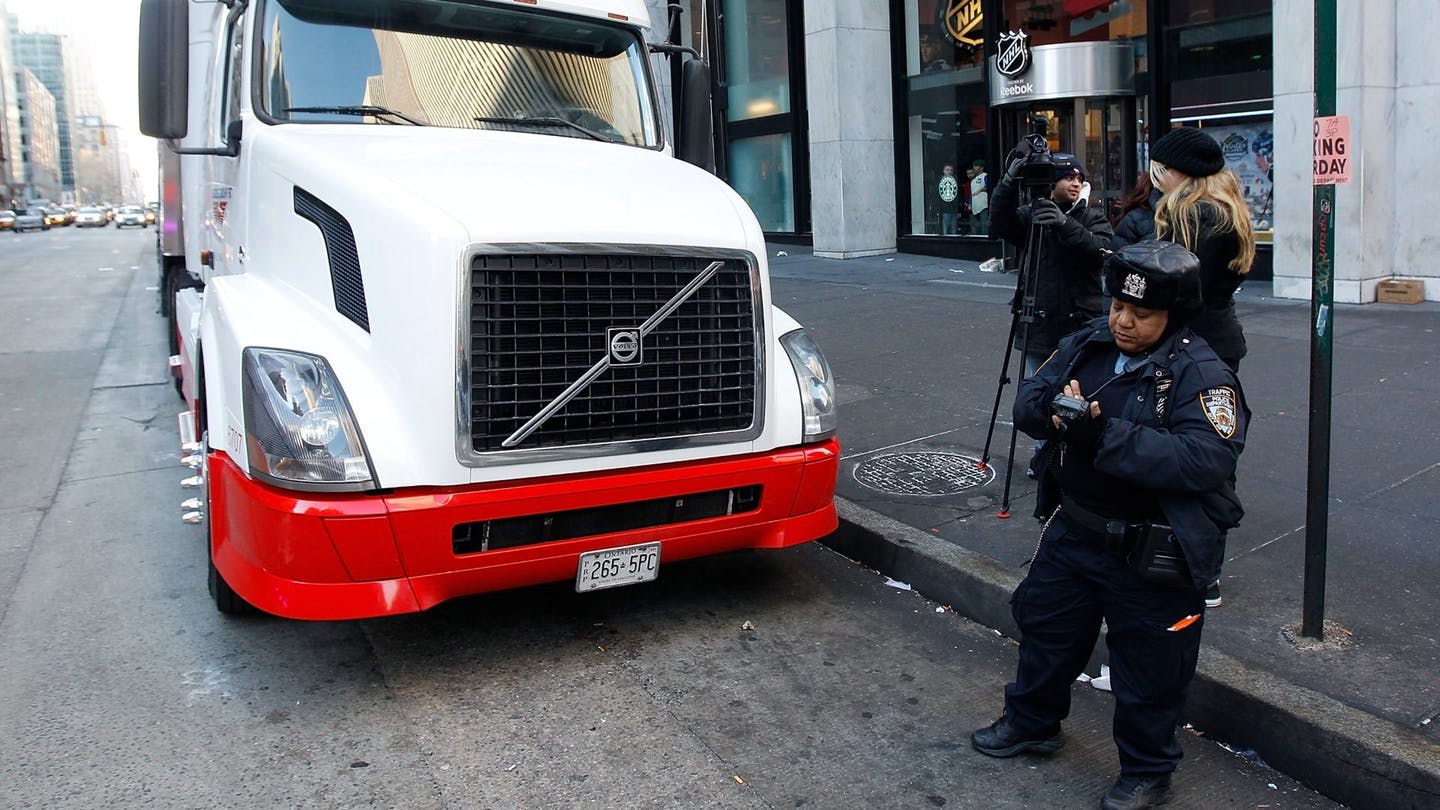See How Verdansa and George Pakenham have made strides in bringing awareness to idling and enforcing idling laws to help reduce carbon emissions.
Galileo TV - July 7, 2019
Park in the second row and run the engine? That does not have to be! In New York, you can simply photograph traffic offenders via smartphone and earn money. But how exactly does it work?
In der zweiten Reihe parken und den Motor laufen lassen? Das muss nicht sein! In New York kann man einfach per Smartphone Verkehrssünder fotografieren und dabei Geld verdienen. Aber wie funktioniert das genau?
Video in German
The Times of London | April 30 2019

Back when New York City was a metropolis rife with muggings and murders, a group of citizens dressed in crimson began patrolling the streets and subways calling themselves the Guardian Angels. Now a new set of vigilantes has risen up to do battle with another threat to the life of the city, posed by cars parked with their engines running.
New Yorkers may not know the name of David Dong or Zachary Tinkelman, but between them over the past year, the two men have reported more than 90 illegally idling vehicles to the authorities. Under a programme launched last year to reduce air pollution they were entitled to claim a share of the fine collected by the city. Mr Dong, a lawyer, made $4,912.80 while Mr Tinkelman, who is said to be a theatre worker, was awarded $4,600.
Thirteen ordinary New Yorkers stepped up to bring idling motorists to book over the past year, resulting in 188 summonses, according to the Department of Environmental Protection. Mr Dong and Mr Tinkelman were the Batman and Robin of the idling justice league, accounting for nearly half the summonses. Just behind them was George Pakenham, a Wall Street banker who is largely responsible for the programme. Engine idling in New York causes as much pollution as nine million lorries driving the length of the city, from the Bronx to Staten Island, according to the city government.
Mr Pakenham first became interested in 2006. “It was in the aftermath of the Iraq war, which it had become clear was for oil,” he said. “I would see my fellow New Yorker at the kerbside, in a truck with its engine on.”
In addition, his brother, a non-smoker, had been diagnosed with lung cancer, which made him particularly interested in the possible effects of air pollution. Returning one night to his flat on the Upper West Side he accosted the driver of a limousine idling outside his building and asked the driver to turn off the engine. “He said, ‘Oh, sure.’ I thought, ‘Wow!’”
Mr Pakenham duly began accosting other idling drivers. Once, rapping at the window of a limousine, the driver shooed him away, saying he was an undercover cop. “Then he goes, ‘Get back here!’ He goes, ‘I admire you knocking against my window. There is a law against what I was doing. If you are interested, do the research.’ ”
Mr Pakenham was, and did: the law, from 1971, prohibited idling for more than three minutes. He began keeping a spreadsheet of driver responses to his knocks: often people said, “I’m not paying for the gas,” but he heard all sorts of other justifications. A film about his efforts: Idle Threat: Man on Emission, helped to boost his profile and made the city government take note. In 2014 an official offered him some advice over lunch. “She said, ‘Great movie but the New York Police Department will never enforce this law. They just don’t give a damn.
“She said to me, ‘You need to pursue this with a citizen’s air quality complaint form, where the citizen gets half the fine.’”
A bill pushed by his local representative became law last year. Under the legislation, whistleblowers could submit time-stamped photographs or video footage, by way of evidence, and receive 25 percent of the fine.
The Drive - April 29, 2019
By Chris Tsui
 "Snitches get riches." Wait, that's not the saying, is it?
"Snitches get riches." Wait, that's not the saying, is it?
Last year, New York City launched a cash reward program for any citizens who blew the whistle on commercial vehicles that violated the city's anti-idling law, parking by a curb with the engine running for over three minutes (or one minute in a school zone). For a small group of, um, enterprising New Yorkers, this has proven to be quite the lucrative side-hustle.
According to the New York Post, NYC's Department of Environmental Protection awards 25 percent of the generated fines and paid out a total of $20,000 to a group of just 13 amateur informants in 2018. All in all, the city issued 1,038 idling-related summonses last year compared to just 24 in 2017.
The program's top earner, a lawyer named David Dong, reportedly made $4,912.80 off of 47 violations. Nipping at his heels is theater worker Zachary Tinkelman, who took home $4,600 from the same number of summonses. Coming in third is George Pakenhem, a banker who was apparently instrumental in the program's inception and made $4,300 from ratting idlers out last year.
Interestingly, it sounds like the program's top contributors all kind of know each other because Pakenham spoke to the Post and said Dong is "a machine" who's "very aggressive" and "really pursuing this in an entrepreneurial way."
The fine for idling too long on a New York City street ranges from $350 to $2,000 for repeat offenders. Citizens who notice an offending vehicle can tattle file a complaint by submitting a DEP form along with a time-stamped photo or video evidence. Pakenhem says it typically takes three months to collect a bounty from the day of submission.
"Citizens are doing the job that the police don't wish to do and they're being compensated for it, " says Pakenhem. "And at the same time they're cleaning up the air in New York City, so it's a trifecta of wins, so to speak."
